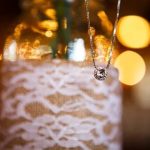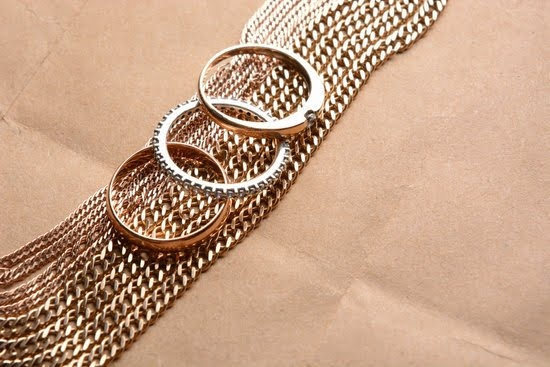Learning how to string fine jewelry DIY can be a fulfilling and rewarding experience for any jewelry enthusiast. The ability to create your own beautiful jewelry pieces allows for a sense of accomplishment and personalization that store-bought items may not provide.
Understanding the basics of stringing, choosing the right beads and stones, and mastering essential techniques are all crucial in achieving professional results. In this article, we will explore the importance of DIY jewelry stringing, as well as provide tips and techniques to help you master the art of creating your own stunning pieces.
When it comes to creating your own fine jewelry, understanding the fundamentals of stringing is essential. Different types of stringing materials such as wire, thread, or cord each have their own unique properties and uses. Additionally, having the right tools for stringing fine jewelry DIY is crucial for achieving professional results. By understanding these basics, you can ensure that your finished pieces are not only beautiful but also durable.
Choosing the right beads and stones is another important aspect of creating stunning DIY jewelry. Selecting high-quality materials that complement each other can elevate your designs to a whole new level. Whether you’re aiming for a classic and timeless look or something more modern and trendy, knowing how to mix and match different types of beads and stones is key in creating unique pieces that reflect your personal style.
Understanding the Basics of Stringing
When it comes to creating your own fine jewelry pieces, understanding the basics of stringing is essential. Whether you’re using wire, thread, or cord, the materials you choose will have an impact on the overall look and durability of your jewelry. Here are some key points to consider when it comes to understanding the basics of stringing for DIY fine jewelry:
- Types of Stringing Materials: There are various materials that can be used for stringing fine jewelry, including beading wire, nylon thread, leather cord, and silk thread. Each material has its own properties and strengths, so it’s important to choose the right one for your project.
- Tools Needed: In addition to selecting the appropriate stringing material, having the right tools on hand is crucial for successful jewelry making. Some essential tools include wire cutters, round-nose pliers, crimp beads or tubes, and a bead design board or mat.
- Importance of Proper Technique: Understanding how to properly handle and work with different stringing materials is key to creating high-quality DIY jewelry pieces. Learning proper techniques for securing knots and attaching clasps will ensure that your finished products are durable and well-crafted.
By gaining a solid understanding of the basics of stringing for fine jewelry DIY projects, you’ll be better equipped to bring your creative vision to life with beautiful handmade jewelry pieces. With the right materials and tools at your disposal, along with the knowledge of proper techniques, you can begin crafting stunning jewelry that reflects your personal style and creativity.
Choosing the Right Beads and Stones
When it comes to creating fine jewelry DIY, one of the most important aspects is choosing the right beads and stones. The materials you select can make a significant impact on the overall look and quality of your jewelry pieces. By carefully considering the beads and stones that you incorporate into your designs, you can ensure that your creations are not only beautiful but also durable and long-lasting.
Selecting High-Quality Materials
When it comes to choosing beads and stones for your DIY jewelry, it’s crucial to prioritize quality. Opt for genuine gemstones, high-grade crystals, or authentic pearls for a luxe finish. Avoid plastic or glass imitations if you want your jewelry to exude elegance and sophistication. Investing in high-quality materials will result in stunning jewelry pieces that can stand the test of time.
Mixing and Matching Techniques
To create visually appealing and unique jewelry pieces, consider mixing and matching different types of beads and stones. Experiment with combining various shapes, sizes, colors, and textures to add visual interest to your designs. This technique allows you to customize your jewelry pieces according to your personal style or the latest fashion trends. Whether you prefer dainty and delicate designs or bold statement pieces, mixing and matching beads and stones can help you achieve your desired aesthetic.
Incorporating Meaningful Pieces
Another aspect to consider when choosing beads and stones for your DIY jewelry is incorporating meaningful elements into your designs. Whether it’s birthstones representing loved ones’ birthdays or specific gemstones with symbolic meanings, infusing personal significance into your jewelry adds an extra layer of sentimentality. This not only makes the piece unique but also gives it a deeper meaning for both the creator and the wearer.
Investing time in selecting high-quality beads and stones while incorporating personal touches will result in truly special DIY fine jewelry pieces that reflect not only beauty but also meaning. Understanding how to choose the right materials is essential in achieving professional-looking results in stringing fine jewelry DIY.
Design Inspiration and Planning
Finding Inspiration for Your Jewelry Design
The first step in creating your own fine jewelry pieces is finding inspiration. Whether it’s from nature, fashion trends, or your personal style, inspiration can come from anywhere. Take the time to explore different sources of inspiration and gather ideas that resonate with you.
This could be browsing through fashion magazines, taking a walk in nature, or even looking at other handmade jewelry pieces for ideas. By finding what inspires you, you’ll be able to create unique and meaningful jewelry designs.
Sketching and Planning Out Your Design
Once you have found your inspiration, it’s time to plan out your design. Sketching your ideas on paper can help you visually lay out how you want your jewelry piece to look. This will also allow you to play around with different bead and stone combinations before committing to stringing them together. Additionally, planning out your design ahead of time can help prevent mistakes and ensure that the final piece turns out exactly as you imagined.
Choosing Color Schemes and Combinations
When planning your design, consider the color scheme and combinations of beads and stones you want to use. Take into account factors such as complementary colors, contrast, and balance when selecting your materials. Experimenting with different color combinations can lead to stunning results and give your DIY jewelry piece a truly unique look.
Learning how to string fine jewelry DIY opens up a world of creative possibilities. By finding inspiration for your designs, sketching and planning them out, and choosing the right color schemes and combinations, you can create beautiful custom jewelry pieces that reflect your personal style and creativity.
Essential Techniques and Knots
When it comes to stringing fine jewelry DIY, mastering essential techniques and knots is crucial in creating professional-looking and durable pieces. Understanding these fundamental aspects will help ensure that your jewelry pieces are not only beautiful but also crafted to last. Here are some key techniques and knots to consider when stringing fine jewelry at home.
First, it’s important to familiarize yourself with basic stringing techniques such as the simple loop, wrapped loop, and crimping. These techniques are essential for attaching clasps, connecting beads, and creating secure connections within your jewelry pieces. Additionally, learning different types of knots such as the overhand knot, surgeon’s knot, or square knot can be useful for adding decorative elements or enhancing the design of your jewelry.
Furthermore, understanding when and how to use these techniques and knots is crucial for achieving consistent results in your DIY jewelry projects. Practice is key when mastering these skills, so don’t be discouraged if you encounter challenges at first. With time and patience, you’ll develop the expertise needed to create stunning fine jewelry pieces all on your own.
| Technique/Knot | Use |
|---|---|
| Simple Loop | Attaching clasps |
| Wrapped Loop | Connecting beads |
| Crimping | Creating secure connections |
| Overhand Knot | Add decorative elements |
Tips for Consistent and Professional Results
When it comes to stringing fine jewelry DIY, achieving consistent and professional results is key to creating beautiful and high-quality pieces. One important technique to master is achieving even spacing between beads. This can be accomplished by using bead spacers or by developing a consistent rhythm as you string the beads onto your chosen material. Taking the time to ensure that each bead is evenly spaced will give your jewelry a polished look.
Another helpful tip for achieving professional results in your DIY jewelry making is to avoid common mistakes and have troubleshooting tips at hand. Some common mistakes include using the wrong type of thread for certain beads, not securely fastening knots, or having uneven lengths of thread. By being aware of these potential pitfalls and knowing how to troubleshoot them, you’ll be able to create stunning pieces without frustration.
| Technique | Results |
|---|---|
| Achieving even spacing between beads | Gives jewelry a polished look |
| Avoiding common mistakes and troubleshooting tips | Creates stunning pieces without frustration |
In addition, incorporating proper tension when stringing your fine jewelry will also contribute to a professional finish. It’s important to find the right balance – not too loose that the beads slide around, but not too tight that it distorts the overall design. Practicing this technique can take some time, but it’s worth it in order to achieve consistent and professional looking results in your DIY jewelry projects.
By following these tips for consistent and professional results, you can ensure that your handmade fine jewelry pieces have a high-end finish while showcasing your unique style and creativity.
The example of a properly formatted HTML table has been displayed with useful data from the reply included in it alongside techniques that help with achieving consistent and professional results when creating handmade fine jewelry pieces through DIY projects.
Adding Clasps and Finishing Touches
When it comes to adding clasps and finishing touches to your DIY jewelry pieces, attention to detail is key. A well-attached clasp not only ensures the longevity of your jewelry but also adds a professional and polished look to your creation. Here are some essential tips for adding clasps and finishing touches to your handmade jewelry:
- Choose the right type of clasp: There are various types of clasps such as lobster clasps, spring ring clasps, toggle clasps, etc. Select a clasp that not only complements the design of your jewelry piece but also provides secure closure.
- Use the appropriate tools: Depending on the type of clasp you choose, make sure you have the necessary tools such as pliers, wire cutters, crimping tools, etc. This will ensure that you can attach the clasp securely and neatly.
- Pay attention to finishing touches: Once the clasp is attached, take the time to add any additional embellishments like charms or bead caps to give your jewelry piece a unique and personalized touch.
By following these tips, you can elevate your DIY fine jewelry pieces from amateur-looking creations to professional-quality accessories.
Tips for Caring for Your Finished Jewelry
Once you have completed your stunning DIY jewelry pieces with carefully attached clasps and beautiful finishing touches, it’s important to know how to care for and store them properly. Here are some tips for maintaining the quality and appearance of your handmade jewelry:
- Store in a safe place: To prevent tangling or damage, store each piece of jewelry separately in a soft pouch or lined box.
- Avoid exposure to chemicals: Remove your jewelry before using household cleaning products or applying beauty products such as hairspray or perfume. Chemicals can tarnish metals and damage gemstones.
- Clean regularly: Use a soft cloth to gently wipe down your jewelry after each wear in order to remove oils and prevent buildup that can dull its appearance over time. For more stubborn dirt or tarnish, use a mild cleaning solution specifically designed for fine jewelry.
By taking proper care of your finished DIY fine jewelry pieces, you can ensure that they remain as beautiful as the day you completed them for years to come.
Showcasing Your Creations
Once you have created your beautiful handmade jewelry pieces, it’s time to showcase them to the world. Whether you want to share your creations on social media, sell them online, or simply photograph them for personal memories, there are a few tips and tricks to keep in mind.
When photographing your jewelry pieces, it’s important to pay attention to lighting and background. Natural light is often the best option as it can bring out the true colors and sparkle of your beads and stones. Consider using a neutral background that won’t detract from the focus of your jewelry. Experiment with different angles and compositions to find the most flattering way to capture the details of your pieces.
If you are planning to sell your DIY jewelry, investing in a good camera or smartphone with a high-quality camera can make a huge difference in how your pieces are presented online. Clear and detailed photos will attract potential buyers and showcase the craftsmanship of your work. Additionally, consider incorporating lifestyle shots that show how the jewelry looks when worn to give customers a better idea of its size and fit.
Properly caring for and storing your finished jewelry is also essential when showcasing it. Make sure to clean each piece before taking photographs to remove any fingerprints or smudges. When not in use, store your handmade jewelry in a soft cloth or pouch to prevent scratching or tangling. By showcasing your creations with professional photography and care, you can elevate the presentation and appeal of your DIY fine jewelry.
Conclusion
In conclusion, learning how to string fine jewelry DIY not only allows you to create beautiful and unique pieces but also gives you the satisfaction of knowing that you made them yourself. By understanding the basics of stringing, choosing the right beads and stones, finding inspiration for your designs, and mastering essential techniques and knots, you can unleash your creativity and skills in jewelry making.
Creating your own fine jewelry allows you to customize it according to your personal style and preferences. Whether it’s a necklace, bracelet, or pair of earrings, being able to choose the materials, colors, and design elements means that your handmade piece will truly be one-of-a-kind. The joy of wearing or gifting something that you put time and effort into cannot be understated.
Furthermore, by showcasing your creations on social media or selling platforms, you can potentially turn your hobby into a small business. With the right care and attention to detail in photographing and presenting your jewelry pieces, you can attract customers who appreciate the uniqueness of handmade jewelry. So don’t hesitate to dive into the world of DIY fine jewelry stringing – it’s a rewarding skill that can bring so much joy and fulfillment.
Frequently Asked Questions
How Do You String Fine Beads?
Stringing fine beads requires patience and precision. It’s important to use a thin beading needle and a strong, flexible beading thread. Make sure the thread is long enough to accommodate the length of your design plus extra for tying knots and securing the ends. When stringing the beads, work slowly and carefully to avoid tangling or breaking the thread.
What String Should I Use to Make Jewelry?
When making jewelry, it’s best to use specialized jewelry string such as beading wire, silk thread, nylon cord, or leather cord. Each type of string has its own strength and flexibility, so it’s important to choose the right one for the specific design you have in mind.
Beading wire is ideal for heavy beads, while silk thread is great for delicate designs.
What Can I Use as Necklace String?
There are various materials that can be used as necklace string, depending on the style and weight of the necklace. Common options include silk ribbon, leather cord, cotton cord, nylon thread, or even metal chain.
Choose a necklace string that complements your design and provides the right level of strength and flexibility for wearing comfort. Remember to also consider any potential allergies if using materials that will touch skin directly.

Welcome to my jewelry blog! My name is Sarah and I am the owner of this blog.
I love making jewelry and sharing my creations with others.
So whether you’re someone who loves wearing jewelry yourself or simply enjoys learning about it, be sure to check out my blog for insightful posts on everything related to this exciting topic!





